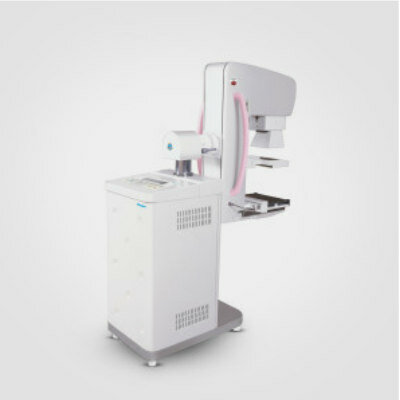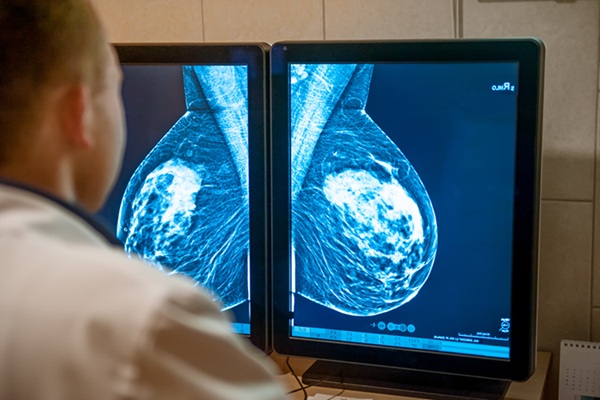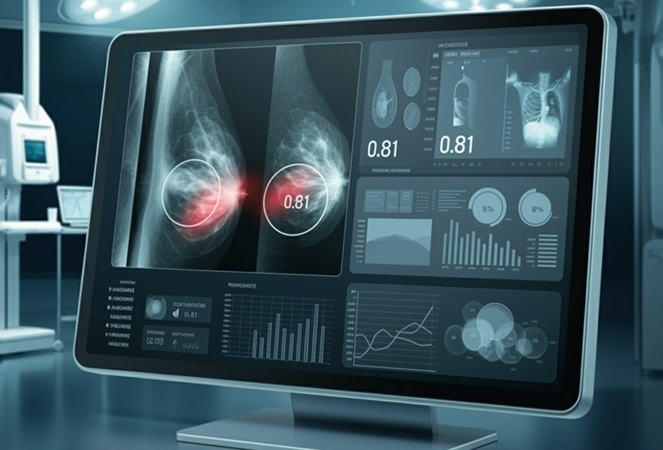Oropharyngeal Cancer Patients with HPV Have Better Response to Radiotherapy
By MedImaging International staff writers
Posted on 03 Oct 2012
Cancer researchers have found considerable differences in radiation-therapy response among patients with oropharyngeal cancer depending on whether they carry the human papillomavirus (HPV), a common sexually transmitted virus. These new findings could lead to more personalized radiation treatment regimens, which for many patients with HPV could be lessened and potentially less toxic. Posted on 03 Oct 2012
HPV-related cancers of the oropharynx have steadily increased in recent years, according to the US National Cancer Institute (Bethesda, MD, USA), particularly among men. At the same time, the frequency of oropharyngeal cancers related to other causes, such as smoking or alcohol consumption, is declining. HPV is the most common sexually transmitted infection in the United States; it can spread through direct skin-to-skin contact during vaginal, anal, and oral sex.
The study, conducted by Dr. Allen Chen, associate professor at the University of California (UC), Davis (Sacramento, CA, USA) department of radiation oncology, examined patterns of tumor reduction during radiation treatment in two otherwise similar groups of patients with oropharyngeal cancer: those who tested positive for HPV and those who tested negative for the virus. None of the HPV patients in the study was a smoker, a leading risk factor for the disease. The study’s findings were published online September 25, 2012, in the Laryngoscope Journal.
Dr. Chen utilized computed tomography (CT) scans acquired during image-guided radiation therapy (IGRT) and endoscopy to capture three-dimensional (3D) images of the patients’ tumors and monitor their treatment progress. He discovered that within the first two weeks after beginning radiation, the gross tumor volume decreased by 33% in HPV-positive patients, whereas the volume decreased by only 10% in HPV-negative patients.
Dr. Chen noted that the findings reveal that HPV-positive patients have a more rapid and robust response to radiation treatments, confirming what clinicians have suspected for years. “These HPV-related tumors literally melt before your eyes,” he said. “It is very gratifying to tell patients early on during treatment that their tumors are responding so quickly. Most of them are pleasantly relieved to hear such news.”
The rapid rate of tumor regression did not continue, however, after the second week of radiation treatment, and by the end of the seven-week regimen, the total tumor shrinkage in both groups of patients was nearly the same. However, “the dramatic early response observed in the HPV-positive patients strongly implies that these tumors behave distinctly from a biological standpoint and could be approached as a separate disease process,” Dr. Chen said.
For instance, the findings suggest that treatment for HPV-positive cancer may not need to be as intensive for it to be effective, according to Dr. Chen, adding that a shorter, condensed treatment regimen would potentially lessen the side effects from radiation, which include sore throat, dry mouth, taste loss, and swallowing difficulties. “It is likely that treatment in the future will be individualized based on biomarkers present in the tumor, and HPV has the potential to do just that,” said Dr. Chen.
Dr. Chen reported that there is increasing evidence that HPV-positive patients who receive radiation treatments live longer and have higher cure rates. According to the NCI, 88% of the HPV-positive patients are still alive two years after their treatments, compared with 66% of the HPV-negative patients. “Given the impressive outcomes for patients with HPV-positive cancer using currently aggressive treatments, how to deintensify therapy while maintaining cure rates is definitely a hot topic right now,” said Dr. Chen.
Dr. Chen, in collaboration with colleagues, has recently launched a clinical trial of HPV-positive oropharyngeal cancer patients to evaluate outcomes when their radiation doses are reduced from seven weeks to either five or six, depending on their response to initial chemotherapy. This institutional trial, recently opened enrollment.
The current clinical trial also involves collection of oropharyngeal patient blood and tumor samples during treatment, so that researchers can precisely correlate HPV in these specimens with a patient’s rate of response to radiation therapy. The drastic increase in oropharyngeal cancers in recent years has been described as an “epidemic,” Dr. Chen said, caused in large part to the increasing prevalence of HPV. In the United States, more than half of cancers currently diagnosed in the oropharynx are linked to HPV-16, according to the National Cancer Institute. “Our trial was designed to help determine what the optimal treatment approach for these patients might be in the future,” he said.
Related Links:
University of California, Davis














